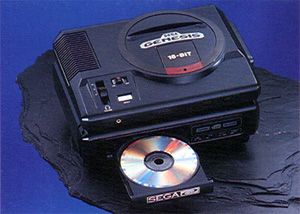

|
Welcome To The Next Level By Greg Gillis
MANY WERE SURPRISED by the Genesis system's huge success in 1991 including, it seems, Sega themselves. After the avalanche of fantastic games released for the system in the fall of 1991, the first half of 1992 was unsettlingly devoid of any major new titles on store shelves. Contrast Sega's release schedule for the first half of 1992 with Nintendo's strong SNES line-up, including titles like Contra 3, Teenage Mutant Ninja Turtles 4 and The Legend of Zelda: A Link to the Past, and Sega releases like Art Alive and Kid Chameleon start to look rather unimpressive by comparison. In June, Capcom released an exclusive home conversion of Street Fighter II for the SNES. Street Fighter II was by far the most popular arcade game of 1992, gracing countless magazine covers and attracting unprecedented media attention, and now the only way to play it at home was on Nintendo's 16-bit system. To add insult to injury, the SNES version of Street Fighter II used the first 16 megabit cartridge designed for a home system, trouncing Star Conrol's previous 12 megabit record and doubling the size of any of Sega's best Genesis efforts. All was not lost, however, because while Sega hadn't released much of note in the first half of the year, the second half of 1992 would bring sequels to key Genesis franchises like Sonic the Hedgehog, large cartridge sizes in games like the 16 megabit Streets of Rage II, and best of all - the release of the Sega CD. Sega also managed to sign several new Genesis developers throughout the year, including the long-standing Nintendo stalwart Konami. It seems the dearth of Sega titles in the early part of the year didn't hurt the Genesis system as much as the gaming press would have had its readers believe, either. Sega claimed that their head start over Nintendo had given them a 61% share of the 16-bit hardware market by the end of 1991 and the biggest selling cartridge of that year with Sonic the Hedgehog. While the lack of new games early in 1992 no doubt disappointed Genesis owners who had been with the system since its debut and had already played all of the big titles of 1991, Sega had massively expanded the Genesis user base in the fall and these new users had two years worth of software releases to catch up with. Sega's strategy might have angered magazine editors and "hardcore" gamers, but the majority of their user base no longer fell into this category. It was the newcomers who likely kept the Genesis system ahead of the SNES long enough for Sega to pull out its big guns in the fall of 1992. Sega released the "Sega CD" attachment for the Genesis system in November of 1992. Featuring an impressive six megabits of RAM, a 12.5 MHz 68000 CPU, and hardware support for scaling and biaxial rotation of sprites (the SNES could only scale and rotate a single background plane), the system packed a significant amount of power into a $299 package. While launch titles were few and not terribly well received, Sega nevertheless positioned themselves as purveyors of the cutting edge, while Nintendo appeared to be floundering around with "last year's technology." Nintendo countered excitement surrounding Sega's latest device with a series of announcement throughout 1992 intended to make gamers believe that the SNES would soon have a CD-ROM attachment of its own. Over the course of the year, the "specs" for Nintendo's proposed CD drive escalated from being marginally superior to the Sega CD's, to an unbelievable 32-bit super system to be available in the summer of 1993. Suspiciously, these announcements tended to coincide with significant Sega CD press releases from Sega, which caused some to question Nintendo's motives. By the end of the year, it was just as unclear whether Sega or Nintendo was in the lead in the 16-bit video game market in North America as it was at the end of 1991. Nevertheless, despite much naysaying in the gaming magazines of the day, the Genesis was still very much a major player in the video game landscape and would remain so for years to come... "Nintendo had a good showing [at the Winter CES] and with Sega holding a slim lead (or no lead, depending on whose system numbers you believe) one would think that they would at least have had a few 'teaser' sneak peeks out to show everybody that they have something special lined up for the second half." |
